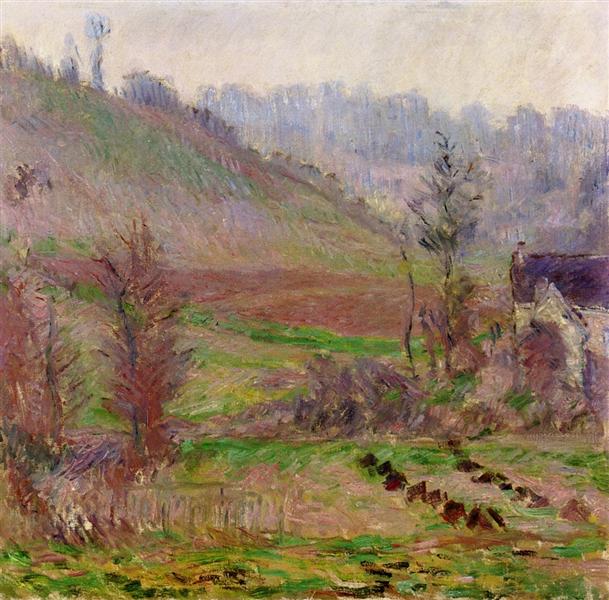Description
The work "Valley of Falaise" by Claude Monet, made in 1885, is a vibrant example of the impressionist style that the artist perfected throughout his career. Monet, known for its focus on light and color, captures in this painting a landscape that evokes nature in its purest and expressive state. The scene presents a landscape of hills and a dynamic sky that give the impression of movement and change, two elements that are fundamental in their work.
In "Valley of Falaise", Monet displays a masterful use of color that is both harmonious and vibrant. The green of the hills are especially notable, transmitting a sensation of freshness and vitality. At the same time, use a blue and gray palette in the sky that suggests a variable atmosphere, showing clouds that float or transform through the effect of light. This game between cold and warm tones is characteristic of impressionism, where colors often apply in loose brushstrokes that allow light to be reflected and mixed in the viewer's eye.
The composition of the painting is carefully balanced. The hills are organized in layers, creating a depth that invites the viewer to explore the landscape. Monet achieves a sense of perspective through the disposition of natural elements, leading the man to the horizon. The absence of human figures in the work emphasizes the greatness of the landscape itself, allowing attention to focus on the interaction between heaven and earth. However, the presence of some shadows and forms subtly suggests life in these natural environments, an aspect that adds a touch of mystery and tranquility to the landscape.
Monet was a pioneer of impressionism, and "Valley of Falaise" reflects the revolutionary ideas of this artistic movement that sought to capture light and instant. The work is in a period of maturity in the artist's career, where he began to experience more intensely with the properties of color and shape. When observing this painting, the viewer can connect with the ephemeral moment that Monet intended to portray, an instant loaded with emotional depth and presence.
The work, like many of Monet's, also enrolls in a broader context of its time. During the 1880s, impressionism was consolidated as a movement, and Monet was in regular contact with other avant -garde artists, which influenced its approach to the landscape and the use of color. His desire to reproduce the naturalness of the environment is aligned with the search for authenticity and connection with nature that was central to impressionists.
In summary, "Valley of Falaise" is a work that encapsulates the essence of impressionism through its vibrant color palette, its balanced composition and its deep connection with nature. It is a testimony of Monet's ingenuity and its ability to turn a simple landscape into a visual poem that celebrates the beauty of the environment, inviting the viewer to stop and contemplate the rich interaction of light and color that defines its impressive works.
KUADROS ©, a famous paint on your wall.
Hand-made oil painting reproductions, with the quality of professional artists and the distinctive seal of KUADROS ©.
Reproduction service paintings With a guarantee of satisfaction. If you are not completely satisfied with the replica of your painting, we refund your money 100%.

